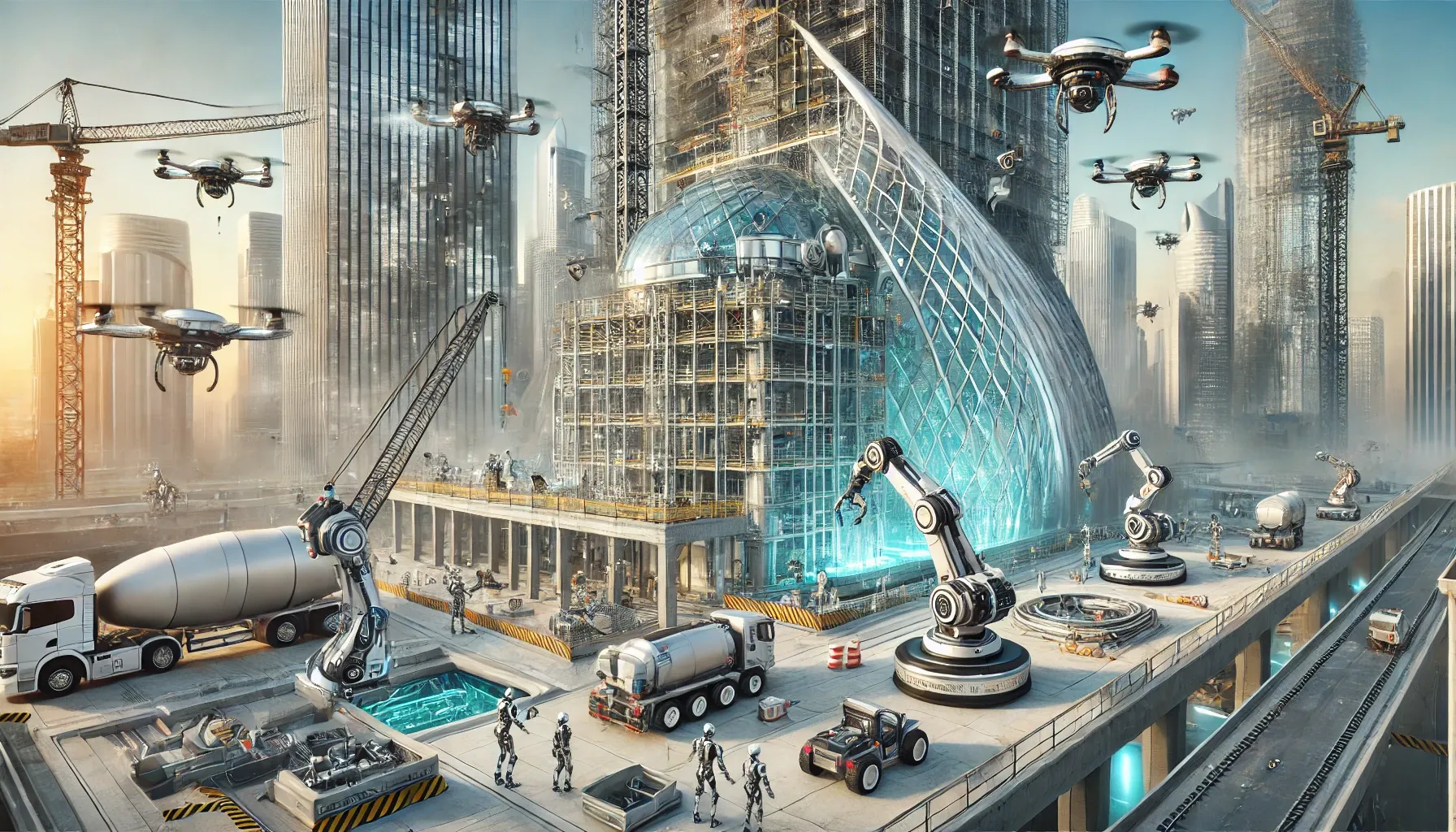2050 Innovation Paper: How will the construction industry change?

- How are new technologies changing the construction industry in 2020?
- The future of construction: digitalization and innovations
Development of the construction industry in 2020: new technologies
The construction industry in 2020 is facing significant changes driven by global shifts in technology. New technologies such as artificial intelligence, robotics, drones, and bionics are beginning to be actively integrated into this sector, opening up new opportunities and changing the approach to design, construction, and management of facilities.
Construction process automation and robotic technologies
- Robots will work in teams to create complex structures using new dynamic materials.
- The building elements will have self-assembly capabilities, which will change the way we think about how buildings are constructed.
- The use of drones for scanning construction sites and monitoring processes
The use of virtual and augmented reality (VR/AR) technologies and 3D printing
- Optimization of design and construction processes.
- Improving interaction between developers, builders, and clients.
Integration of Building Information Modeling (BIM) systems
- Track changes to the project in real time.
- Information and resource management.
- Improving collaboration and communication among the participants in the process.
Robotic exoskeletons and neural control
- Utilizing technology to increase productivity and reduce the risk of injury.
Conclusion
The construction industry is facing the prospect of radical changes. The implementation of innovations will improve productivity, reduce costs, lower the risk of injuries, and enhance the quality of construction. Although many of these changes may seem fantastic, they have already begun to be actively implemented and are transforming this field of activity.
Research on the future of construction
A study by the Midwest Economic Policy Institute (MEPI) predicts that robots could replace up to 2.7 million construction workers by 2057. Experts note that the use of digital technologies in this industry is at a low level, being implemented by only a by a small number of companies. Construction professionals see digitalization as a as a change in all aspects of construction.
Automation and design
Automation of construction processes will affect the approach to architectural design. The possible The possible involvement of robots in the construction of buildings may change the emotional component and "soul" of architecture. Changes in attitudes towards materials, shapes and details will affect the overall appearance of buildings. In this process. drones and 3D printers will play a key role in creating innovative architectural objects.
Exoskeletons in construction
The American company Sarcos specializes in the development of exoskeletons for construction workers.
9 October 2024
29 September
9 October 2024
Technology and the future of construction
The use of 3D printing in construction is becoming increasingly common. New technological methods and materials are being applied, and researchers are actively improving the processes for creating objects that once seemed unattainable. Is it possible that 3D printing will become the foundation of future housing construction? Today, this prospect is not something incredible; it is a potential solution to the housing crisis.
The role of drones in architecture
Drones play an important role in architecture and construction. Multifunctional unmanned quadcopters help in surveillance, design and transportation for architects and builders. The rapid development of digital technology promises to revolutionize the architectural field.

Conclusion:
In conclusion, it can be said that the future of the construction industry captivates the imagination with its innovative changes. Robotic builders, exoskeletons, the golden age of 3D printing, and the use of drones in architecture all indicate that automation and digitalization have already entered our lives. This opens up new opportunities for more efficient and safer construction, but it also raises concerns that design and architecture may lose their uniqueness and human element. However, despite these concerns, new technologies present enormous potential for the development of the industry and promise an exciting and promising future.
Comment
Popular Posts
9 October 2024
9935
29 September
359
9 October 2024
1485
Popular Offers

Subscribe to the newsletter from Hatamatata.com!
Subscribe to the newsletter from Hatamatata.com!
I agree to the processing of personal data and confidentiality rules of Hatamatata





